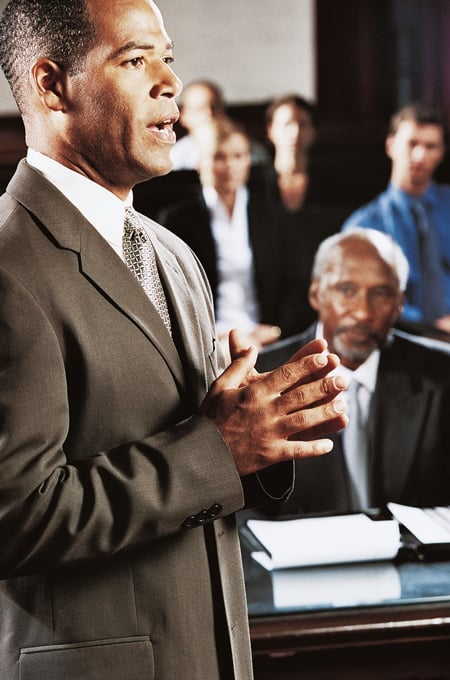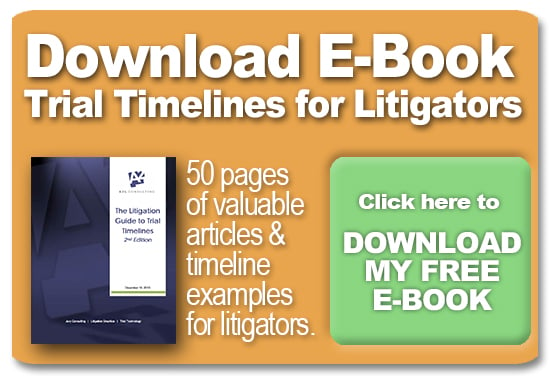Discover how utilizing litigation graphics can significantly impact the outcome of a trial and captivate the jury's attention.
The Power of Visual Communication in the Courtroom
In the courtroom, visual communication plays a crucial role in presenting complex information in a clear and compelling manner. By using litigation graphics, attorneys can effectively convey their arguments and evidence to the jury, helping them understand the case more easily.
Visuals have a powerful impact on human perception and memory. Studies have shown that juries remember information better when it is presented visually rather than verbally. This makes litigation graphics an essential tool for attorneys to enhance the jury's understanding and retention of key facts and arguments.
Additionally, visuals can evoke emotions and create a stronger connection with the audience. By incorporating compelling images, charts, and diagrams, attorneys can engage the jury on a deeper level and make a lasting impression.
The power of visual communication in the courtroom cannot be underestimated. Litigation graphics provide attorneys with a powerful tool to convey complex information effectively, enhance understanding and retention, and create a lasting impact on the jury.
Types of Litigation Graphics
Attorneys can use various types of litigation graphics to support their arguments and present evidence. Some common examples include:
- Timelines: Litigation timelines effectively illustrate the chronological sequence of events and highlight key dates and milestones in the case.
- Charts and Graphs: Litigation charts and graphs are useful for presenting statistical data, comparisons, and trends. They can make complex information more accessible and understandable for the jury.
- Diagrams: Diagrams can help visualize relationships, processes, and spatial arrangements. They are particularly useful in cases involving accidents, construction, or medical procedures.
- 3D Animations: 3D courtroom animations can bring complex concepts or events to life, making them easier to comprehend and visualize. They are commonly used in cases involving accidents, product demonstrations, or crime scene reconstructions.
- Exhibits: Exhibits include physical or digital objects such as photos, documents, or objects relevant to the case. They can be presented as visual aids to support testimony or demonstrate evidence.
These are just a few examples of the types of litigation graphics that attorneys can leverage to present their case and engage the jury effectively.
Benefits of Using Litigation Graphics
Using litigation graphics offers several benefits for attorneys and their clients. Some key advantages include:
- Enhanced Understanding: Visuals help simplify complex information, making it easier for the jury to understand and interpret key facts and arguments.
Increased Engagement: By incorporating compelling visuals, attorneys can capture and maintain the jury's attention throughout the trial, which can significantly impact the jury's perception of the case.
Improved Persuasion: Well-designed litigation graphics can enhance the persuasive power of attorneys' arguments. Visuals have a greater impact on jurors' decisions than verbal arguments alone.
- Efficient Communication: Visuals allow attorneys to convey information more efficiently, saving time and ensuring clarity in the courtroom.
- Memorability: Jurors are likelier to remember information presented visually than purely verbal. This can be a significant advantage in influencing their final decision.
Overall, utilizing litigation graphics provides attorneys with a strategic advantage by enhancing understanding, engagement, persuasion, efficiency, and memorability.
Best Practices for Creating Effective Litigation Graphics
Creating effective litigation graphics requires careful planning and execution. Here are some best practices to consider:
- Simplify and Streamline: Keep the visuals concise and easy to understand. Avoid clutter or unnecessary details that may confuse the jury.
- Use High-Quality Images: Ensure that all images and graphics are high-quality and high-resolution. This will enhance their visual impact and prevent any distortion or blurriness.
- Maintain Consistency: Use consistent branding and design elements throughout the graphics to create a cohesive and professional presentation. But be sure to switch up the title bar and other elements to keep the viewers engaged.
- Incorporate Visual Hierarchy: Highlight key information or arguments using visual hierarchy techniques such as size, color, or placement. This will guide the jury's attention to the most important points.
- Practice and Rehearse: Familiarize yourself with the litigation graphics and rehearse their presentation to ensure a smooth and seamless delivery in the courtroom.
By following these best practices, attorneys can create compelling and effective litigation graphics that maximize their impact in court.
Case Studies: Successful Implementation of Litigation Graphics
Numerous case studies have demonstrated the successful implementation of litigation graphics in trials. Here are a few examples:
- Case Study 1: In a personal injury case, the attorney utilized a 3D animation to recreate the accident scene and demonstrate the defendant's negligence. The animation effectively engaged the jury and helped them visualize the sequence of events, leading to a favorable verdict.
- Case Study 2: In a complex patent infringement case, the attorney used visual timelines and charts to present the development of the invention and prove the defendant's infringement. The graphics simplified the technical information and significantly strengthened the case.
- Case Study 3: In a medical malpractice trial, the attorney used diagrams and medical illustrations to explain the procedure in question and highlight the doctor's negligence. The visuals made the complex medical concepts more accessible to the jury and contributed to a successful outcome.
See Persuadius/A2L customer testimonials by clicking here.
These case studies highlight the real-world impact of litigation graphics in influencing jury decisions and achieving successful trial outcomes.
Other articles and resources related to the use of PowerPoint at trial, litigation graphics and PowerPoint trial graphics generally:
- The 12 Worst PowerPoint Mistakes Litigators Make
- Lawyer Delivers Excellent PowerPoint Presentation
- 7 Ways to Avoid Making Your PowerPoint Slides Your Handout
- 12 Ways to Eliminate "But I Need Everything On That PowerPoint Slide"
- 16 PowerPoint Litigation Graphics You Won't Believe Are PowerPoint
- The Redundancy Effect, PowerPoint and Legal Graphics
- The Effective Use of PowerPoint Presentation During Opening Statement
- Don't Use PowerPoint as a Crutch in Trial or Anywhere
- How Much Text on a PowerPoint Slide is Too Much?
- Do Professionally Designed PowerPoint Slides Get Better Results?
- Why Reading Your Litigation PowerPoint Slides Hurts Jurors






Leave a Comment